Error codes on the display of Samsung washing machines

Modern washing machines immediately inform the user of any abnormal situation by displaying the error code that has occurred. Unfortunately, their instructions do not always contain a detailed explanation of the features of the problem that has arisen. Therefore, owners of Samsung washing machines should familiarize themselves with a detailed description of the error codes that are displayed on the display of these devices.
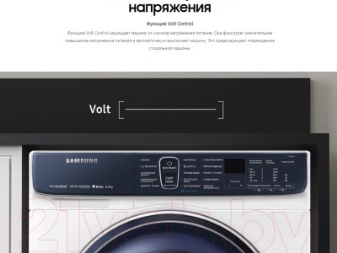
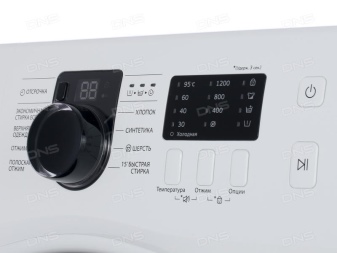
Decoding codes
All modern Samsung washing machines are equipped with a display that shows the digital code of the error that has appeared. Older models have adopted other methods of indication - usually by flashing indicator LEDs. Let's take a closer look at the most common problem reports.
E9
Leakage alarm. The appearance of this code means that the water level sensor during washing 4 times detected that there is not enough water in the drum for the safe operation of the heater. In some models, the same breakdown is reported by codes LC, LE or LE1.
On machines without a display, in such cases, the upper and lower temperature indicators and all the washing mode lamps light up at the same time.
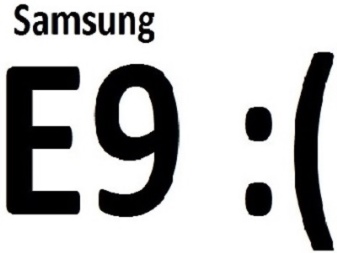
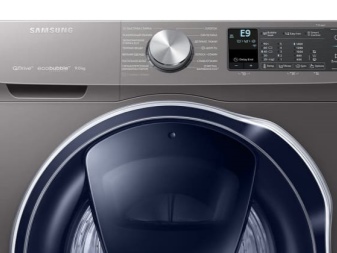
E2
This signal means that there is a problem with the water draining out of the drum after the end of the scheduled wash program.
Models not equipped with a scoreboard signal this error by illuminating program LEDs and the lowest temperature indicator.

UC
When the machine issues such a code, it means that its supply voltage does not correspond to that required for normal operation.
Some cars signal the same problem with signals 9C, 9E2 or E91.
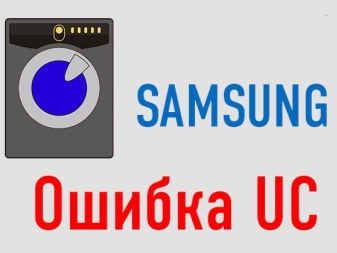
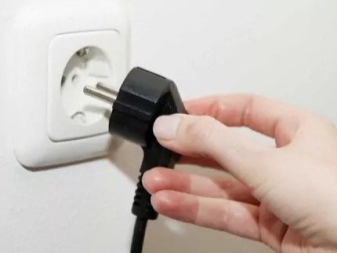
HE1
This indication on the display indicates about overheating of water in the process of entering the selected washing mode... Some models report the same situation with signals H1, HC1 and E5.

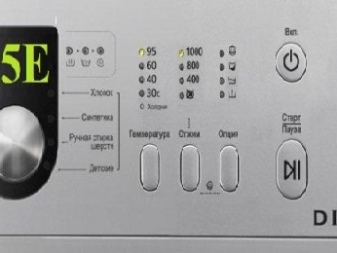
E1
The appearance of this index indicates that the device I cannot fill the tank with water. Certain Samsung machine models report the same malfunction with codes 4C, 4C2, 4E, 4E1, or 4E2.
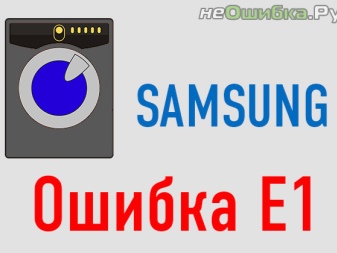
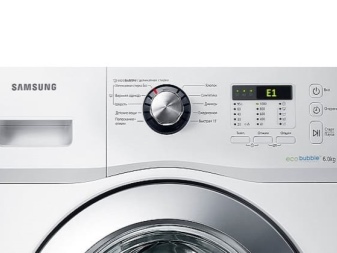
5C
This error on some machine models is displayed instead of the E2 error and reports about problems with draining water from the device.
Another possible designation is 5E.
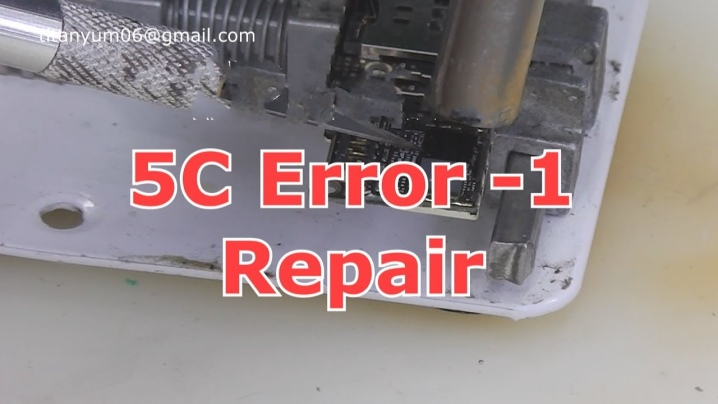
DOOR
This message is displayed when the door is open. On some models, ED, DE, or DC is displayed instead.
On models without a display, in this case, all signs on the panel are lit, including both program and temperature.
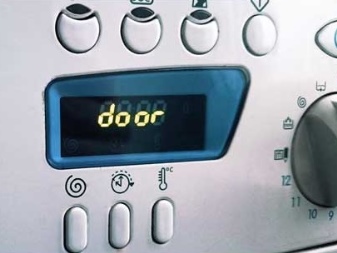
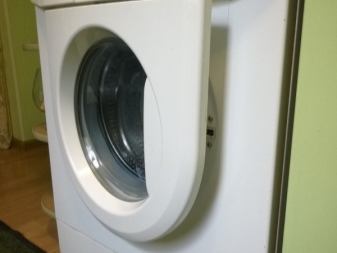
H2
This message is displayed, when the machine fails to heat the water in the tank to the required temperature.
Models without a display indicate the same situation by fully lit program indicators and two central temperature lamps lit simultaneously.

HE2
The reasons for this message are completely are similar to error H2.
Other possible designations for the same problem are HC2 and E6.


OE
This code means the water level in the drum is too high.
Other possible messages for the same problem are 0C, 0F, or E3. Models without display indicate this by illuminating all program lights and the two lower temperature LEDs.

LE1
Such a signal appears if water gets on the bottom of the device.
The same malfunction in some machine models is signaled by the LC1 code.
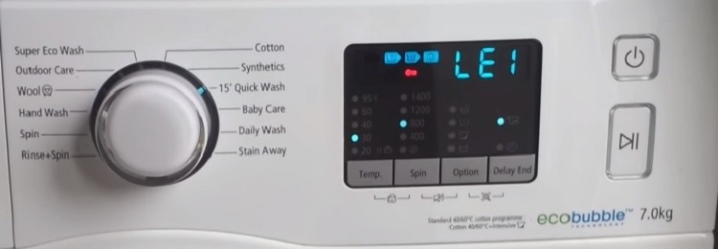
Other
Consider the less common error messages, which are not typical for all models of Samsung washing machines.
- 4C2 - the code is displayed when the temperature of the water entering the device is higher than 50 ° С. Most often, the problem occurs due to accidentally connecting the machine to a hot water supply.Sometimes this error may indicate a breakdown of the thermal sensor.
- E4 (or UE, UB) - the machine is unable to balance the laundry in the drum. Models without a screen report the same error by the fact that all mode indicators and the second temperature light from the top are on. Most often, the problem occurs when the drum is overloaded or, conversely, insufficiently loaded. It is solved by removing / adding things and restarting the wash.
- E7 (sometimes 1E or 1C) - there is no communication with the water sensor. The first step is to check the wiring leading to it, and if everything is in order with it, then it is the sensor that is broken. An experienced craftsman can replace it.
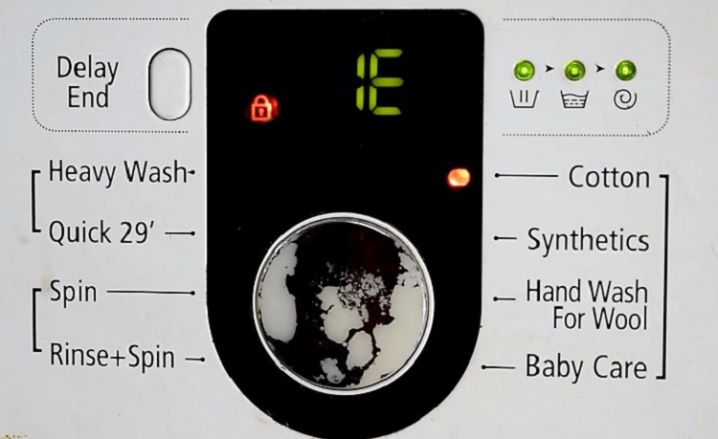
- EC (or TE, TC, TE1, TE2, TE3, TC1, TC2, TC3, or TC4) - no communication with the temperature sensor. The reasons and solutions are similar to the previous case.
- BE (also BE1, BE2, BE3, BC2 or EB) - breakdown of control buttons, solved by replacing them.
- BC - the electric motor does not start. Most often it occurs due to overloading of the drum and is solved by removing excess laundry. If this is not the case, then either the triac, or the engine wiring, or the control module, or the motor itself are broken. In all these cases, you will have to contact the SC.
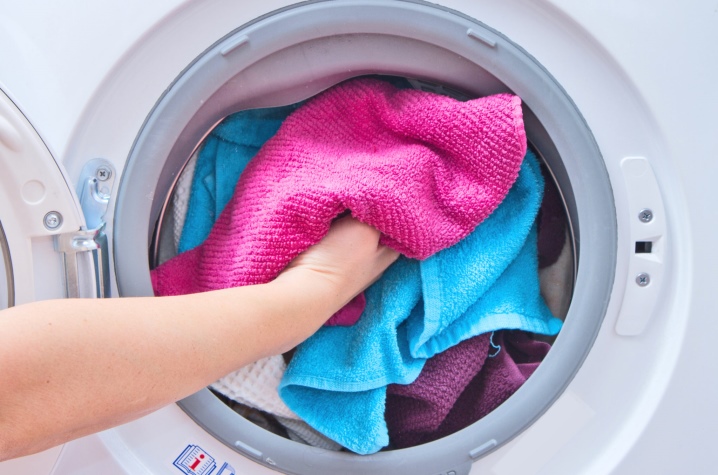
- PoF - turning off the power supply during washing. Strictly speaking, this is a message, not an error code, in which case it is enough to simply restart the wash by pressing “Start”.
- E0 (sometimes A0 – A9, B0, C0, or D0) - indicators of the enabled testing mode. To exit this mode, you need to simultaneously hold down the "Setting" and "Temperature selection" buttons, keeping them pressed for 10 seconds.
- Hot - models equipped with a dryer display this inscription when, according to the sensor readings, the water temperature inside the drum exceeds 70 ° C. This is generally a normal situation and the message will disappear as soon as the water cools down.
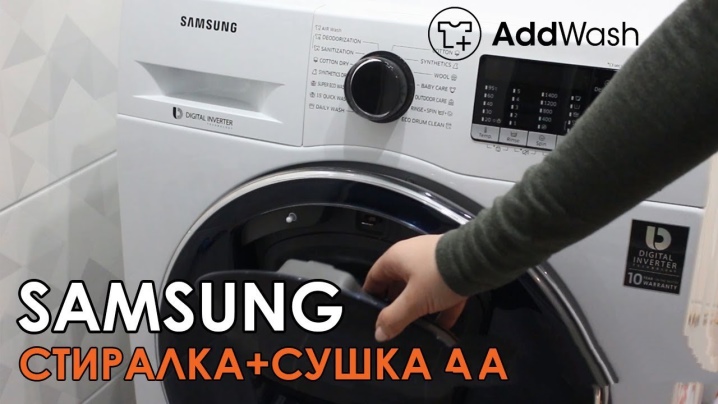
- SDC and 6C - these codes are displayed only by machines that are equipped with a smartphone control system via Wi-Fi. They appear in cases where serious problems arise with the autosampler, and to solve them, you will have to contact the master.
- FE (sometimes FC) - appears only on machines with a drying function and reports a fan failure. Before contacting the master, you can try to disassemble the fan, clean and lubricate it, inspect the capacitors on its board. If a swollen capacitor is found, it must be replaced with a similar one.
- EE - this signal also appears only on the washer-dryer and indicates a breakdown of the temperature sensor in the dryer.

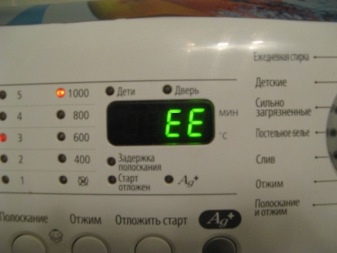
- 8E (as well as 8E1, 8C and 8C1) - breakage of the vibration sensor, elimination in the same way as in the case of breakdown of other types of sensors.
- AE (AC, AC6) - one of the most unpleasant errors that appears in the absence of communication between the control module and the display system. Most often caused by a breakdown of the control controller or the wiring connecting it to the indicators.
- DDC and DC 3 - these codes are displayed only on machines with an additional door for adding items during washing (Add Door function). The first code indicates that the door was opened during washing, then closed incorrectly. This can be corrected by properly closing the door and then pressing the "Start" button. The second code says that the door was opened when the wash was started; to fix it, you need to close it.

In the event that the key or lock icon on the panel lights up or flashes, and all other indicators work in normal mode, this means that the hatch is blocked. If there are any abnormalities in the operation of the machine, then a burning or flashing key or lock may be part of the error message:
- if the hatch is not blocked, the mechanism for blocking it has broken;
- if it is not possible to close the door, the lock in it is broken;
- if the washing program fails, it means that the heating element has broken, and you need to replace it;
- if washing does not start, or another program is being performed instead of the selected program, the mode selector or control module needs to be replaced;
- if the drum does not start spinning when the lock is flashing, and a crackling sound is heard, it means that the brushes of the electric motor are worn out and need to be replaced.
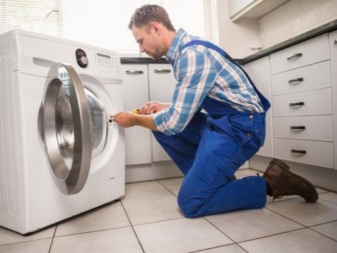
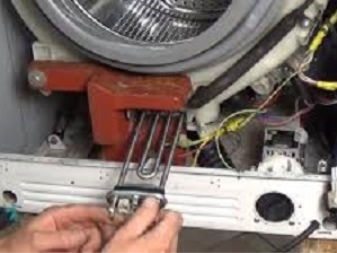
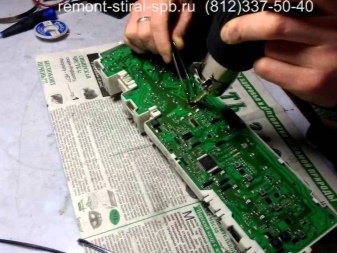
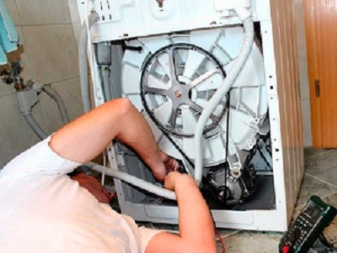
If the drum icon is lit on the panel, then it is time to clean the drum. To do this, you need to start the "Drum cleaning" mode on the typewriter.
In the case when the "Start / Start" button blinks red, the wash does not start, and the error code is not displayed, try restarting your machine.
If the problem does not disappear when the device is turned off, then the breakdown may be associated with the control or display system, and it can only be solved in the workshop.

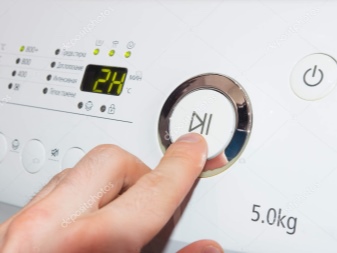
Causes
The same error code can be displayed in different situations. Therefore, before trying to fix a problem that has arisen, it is worth considering the possible causes of its occurrence.
E9
There are a number of causes for water leaks from the machine.
- Incorrect connection of the drain hose. In this case, you need to connect it correctly.
- Loose door closing... This problem is corrected by slapping it with a little effort.
- Breakage of the pressure sensor. Corrected by replacing it in the workshop.
- Damage to sealing parts... To fix it, you will have to call the master.
- Crack in the tank. You can try to find it and repair it yourself, but it is better to contact a specialist.
- Damage to the drain hose or powder and gel container... In this case, you can try to buy the broken part and replace it yourself.
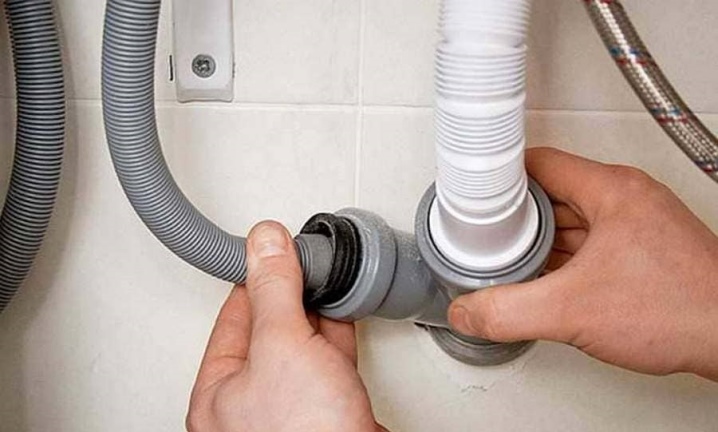
E2
Drainage problems can occur in several cases.
- Blockage in the drain hose or internal connections of the device, as well as in its filter or pump... In this case, you can try turning off the power to the machine, manually draining the water from it and trying to clean the drain hose and filter yourself. After that, you need to turn on the machine without a load in the rinse mode in order to remove residual dirt from it.
- Kinked drain hose... Inspect the hose, locate the bend, align it and start the drain again.
- Breakdown of the pump... In this case, you will not be able to do anything on your own, you will have to call the master and change the broken part.
- Freezing water... This requires the room temperature to be below zero, so in practice this happens very rarely.
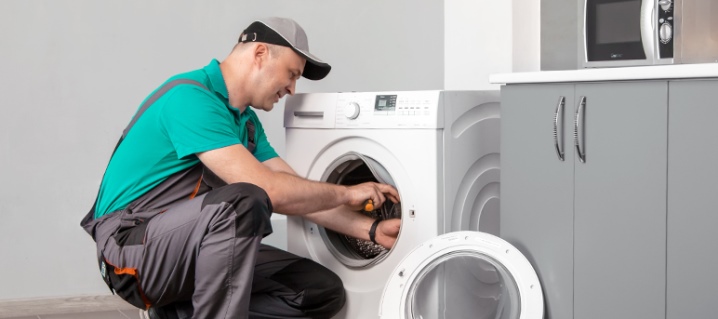
UC
Incorrect voltage can be applied to the input of the machine for various reasons.
- Stable undervoltage or overvoltage of the supply network. If this problem becomes regular, the machine will have to be connected through a transformer.
- Voltage surges. To get rid of this problem, you need to connect the equipment through a voltage regulator.
- The machine is not plugged in correctly (for example, through a high resistance extension cord). Corrected by connecting the device to the network directly.
- Broken sensor or control module... If the voltage measurements in the network show that its value is within the normal range (220 V ± 22 V), this code may indicate a breakdown of the voltage sensor located in the machine. Only an experienced master can fix it.
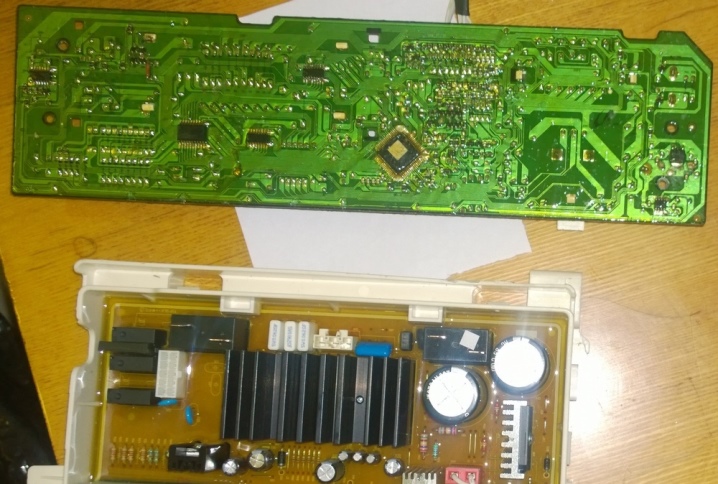
HE1
Overheating of water can occur in a number of cases.
- Power supply overvoltage... You need to either wait until it drops, or turn on the equipment through a stabilizer / transformer.
- Short circuit and other wiring problems... You can try to find and fix it yourself.
- Breakdown of heating element, thermistor or temperature sensor... In all these cases, you need to make repairs in the SC.

E1
Problems with filling the device with water usually arise in several cases.
- Turning off the water in the apartment... You need to turn on the tap and make sure there is water. If it is not there, wait until it appears.
- Insufficient water pressure... In this case, the Aquastop leakage protection system is activated. To turn it off, you need to wait until the water pressure returns to normal.
- Squeezing or kinking of the typesetting hose. Corrected by checking the hose and removing the kink.
- Damaged hose... In this case, it is sufficient to replace it with a new one.
- Clogged filter... The filter needs to be cleaned.

DOOR
The door open message appears in some situations.
- The most commonplace - you forgot to close the door... Close it and click "Start".
- Loose door fit. Check for large debris in the door and remove if found.
- Broken door... The problem can be both in the deformation of individual parts, and in the breakdown of the lock itself or the closing control module. In any case, it is worth calling the master.
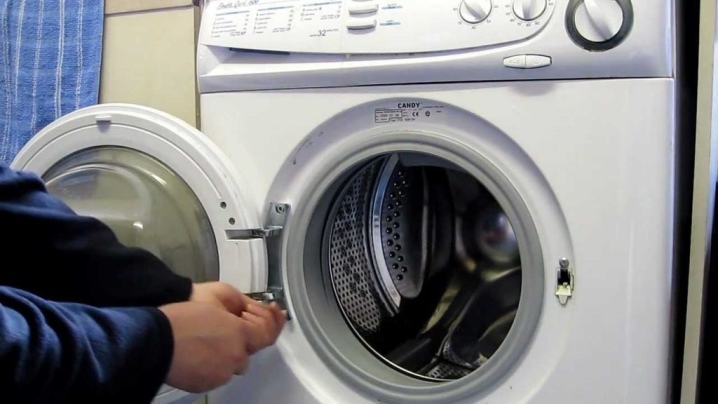
H2
There can be several reasons why the message about no heating is displayed.
- Low supply voltage. You need to wait for it to rise, or connect the device through a stabilizer.
- Problems with wiring inside the car... You can try to find and fix them yourself, you can contact the master.
- Scale formation on the heating element without its failure - this is a transitional stage between a working and a broken heating element. If after descaling the heating element everything starts to work normally, then you are in luck.
- Breakdown of a thermistor, temperature sensor or heating element. You can try to replace the heating element yourself, all other elements can only be repaired by a master.

The overflow message appears most often in certain cases.
- There is too much detergent / gel and too much lather... This can be remedied by draining the water and adding the correct amount of detergent for the next wash.
- The drain hose is not connected correctly... You can fix this by reconnecting it. To make sure that this is the case, you can temporarily disconnect the hose and place its outlet in the tub.
- The inlet valve is blocked open. You can cope with this by cleaning it from debris and foreign objects or replacing it if a breakdown became the cause of the blockage.
- Broken water sensor, wiring leading to it or controller controlling it... All these problems can only be eliminated by an experienced master.
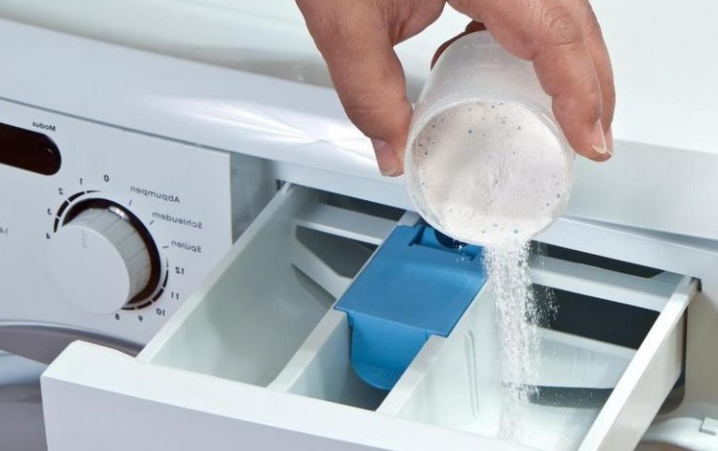
LE1
Water gets to the bottom of the washing machine mainly in a number of cases.
- Leakage in the drain filter, which can form due to improper installation or a ruptured hose... In this case, you need to inspect the hose and, if any problems are found, fix them.
- Breakage of the pipes inside the machine, damage to the sealing collar around the door, leakage in the powder container... All these problems will be fixed by the wizard.
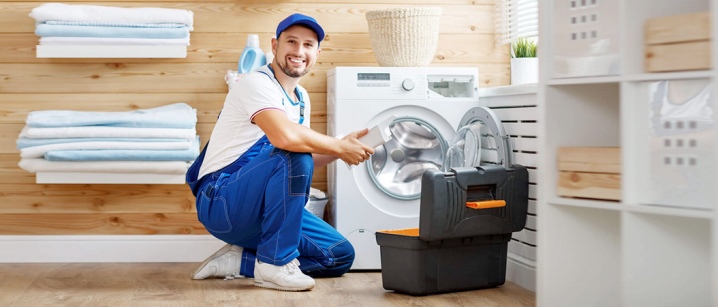
How do I reset the error?
Error messages are displayed for any abnormal situation. Therefore, their appearance does not always indicate a breakdown of the device. At the same time, sometimes the message does not disappear from the screen even after the problems have been eliminated. In this regard, for some not too serious errors, there are ways to disable their indication.
- E2 - this signal can be removed by pressing the "Start / Pause" button. The machine then tries to drain the water again.
- E1 - reset is similar to the previous case, only after restarting the machine should try to fill the tank, and not drain it.
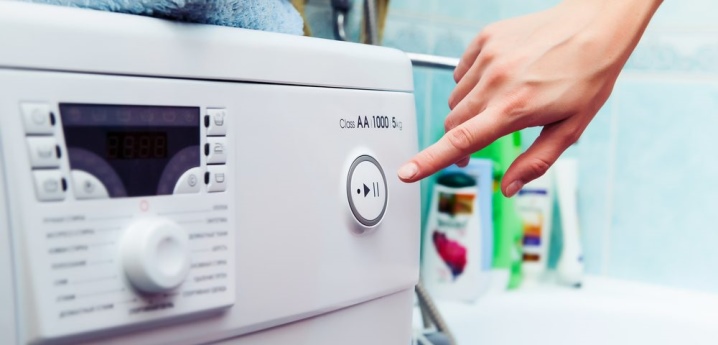
Next, see the error codes for machines without a display.













The comment was sent successfully.